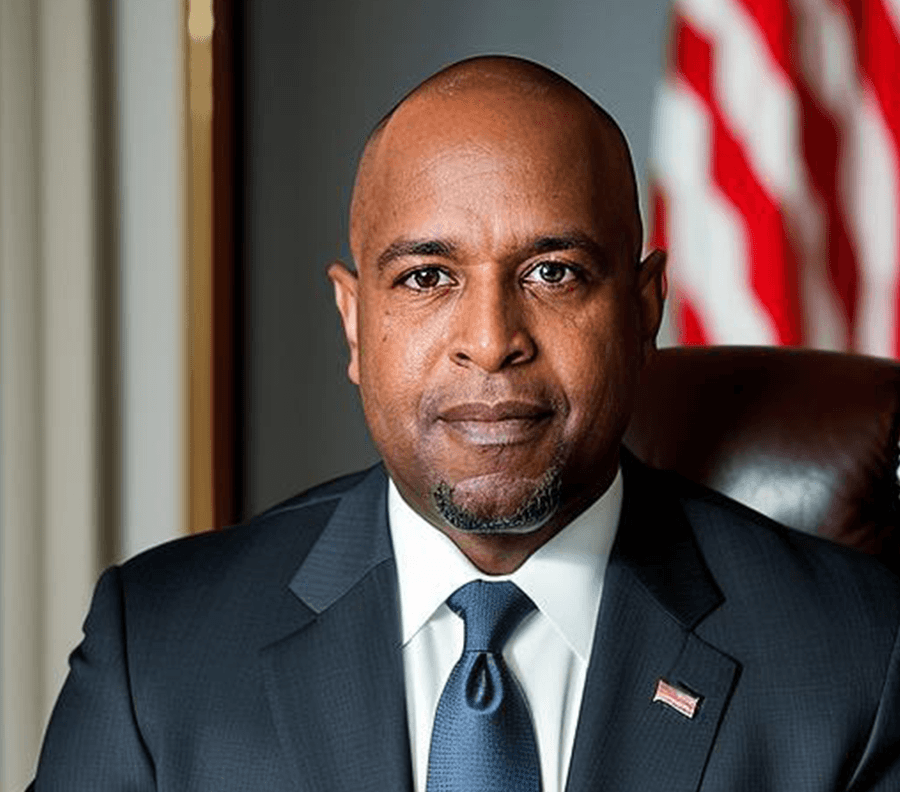Innovative Thinking: Unleashing Potential with the Power of 'Because'
Innovation thrives on a robust foundation of purpose, and the concept of 'Because' lies at the heart of this dynamic driving force. It's not just...
9 min read
 Mick Hunt
:
Apr 16, 2024 11:00:00 AM
Mick Hunt
:
Apr 16, 2024 11:00:00 AM
In team building, the concept of 'Because' serves as a compass for collective purpose. When teams operate with a clear understanding of 'Because,' each member doesn't just know the tasks they are performing; they understand the underlying reasons that make their efforts worthwhile.
Leaders who aim to build cohesive, purpose-driven teams can do so by embedding the 'Because' in the fabric of their team's culture. This translates into a shared belief system that the work is not merely a series of tasks to be completed, but a set of actions that lead to an impactful outcome.
My approach to fostering a 'Because'-centric team involves clear communication of our objectives and their significance. It’s more than articulating the vision; it's about ensuring that the cause resonates with each team member on a personal level.

This connection can turn routine work into a mission, transforming engagement and driving unexpected levels of performance. When team members see their work tied to a significant cause, their commitment deepens, and productivity flourishes.
Establishing a 'Because'-driven team also requires leaders to embody the purpose themselves. By demonstrating how the tasks align with the larger cause, leaders set an example for their teams to follow. Encouragement and recognition play crucial roles too, as they reinforce the value of the cause and each team member’s role within it.
Emphasizing 'Because' creates a powerful narrative where everyone on the team becomes a contributor to a meaningful journey, one that aims for results that often surpass initial expectations.
In my experience, focusing on "because" within teams unlocks a deeper level of commitment. The term "because" provides reasoning and justification behind each action and direction a team takes. When I instill this mindset, team members connect their tasks to a greater purpose, fostering a more cohesive and motivated group.
Strategies for Leaders:
|
Task |
Reason (Because) |
|
Project X |
It will improve efficiency by 20%. |
|
Restructuring Y |
It aligns with market demand and organizational goals. |
Through these methods, I cultivate a team that is not just aware of the "why" but deeply understands the "because." This understanding is what propels my team to perform and achieve beyond expectations.
Creating a team unified by purpose hinges on the depth of their commitment towards the 'because'—the underlying reason that propels action and decision-making. As a leader, it is essential to establish a strong foundation for this purpose-driven culture. Here are strategies I employ to cultivate a sense of purpose within my teams:
I begin by clearly stating the team's objectives, ensuring everyone understands the importance of their contributions. The clearer the 'because,' the stronger the engagement.
I demonstrate the behaviors and attitudes I seek, reinforcing the 'because' in my daily actions. If I expect purposeful work, I first exhibit that commitment myself.
I give positive reinforcement when team members align with our purpose, making sure to acknowledge their understanding of the 'because' in their actions.
I encourage my team to take initiative, enabling them to own their roles in relation to our collective purpose. It’s imperative they see how their personal contributions echo the 'because'.
I maintain open channels of communication, facilitating ongoing dialogue around the 'because'. This not only supports cohesion but also allows for adaptive strategies in light of new insights.
I invest in opportunities that help my team members grow in alignment with our purpose, linking their personal goals with the broader 'because'.
By integrating these strategies, I foster a work environment where the team doesn’t just understand our purpose, they live it. The result is a proactive, high-performing team that excels because their work is more than just a job—it’s a reflection of our collective mission.
When I foster a shared vision within my team, I start by clarifying the end goal. I ensure that every individual understands the reason behind their tasks – their because.
Here's how I approach it:
By embedding the 'because' into the heart of our mission, I guide my team to operate with purpose. The result is a group of individuals who are committed, not just to the task, but to the difference we're making in the world.
They're motivated by a shared vision, one that transcends personal gain and fosters genuine collaboration. This way, we don't only achieve our goals; we exceed them.
In building cohesive teams, articulating the 'Because' is paramount. This is the foundation that transforms individual understanding into collective action.
Allow me to share my personal strategies:
I identify the clear, tangible objectives that our efforts are supporting. This sets the stage for a deeper conversation about our direct contributions.
It's crucial for me to maintain consistency in my messaging. This not only echoes the importance of our goals but also reinforces our purpose.
I opt for transparency regarding decisions and objectives. Sharing the cause-and-effect relationship enhances trust and promotes alignment.
Interactive discussions are a method I prioritize. Engaging team members in dialogue allows them to voice their understanding and interpretations of the 'Because'.
Acknowledgement of individual and team efforts underlines their part in the bigger picture. It's not just about what we do; it's about the rationale behind it, which deserves to be recognized.
By moving our focus from just the "Why" to the "Because," my team gains a robust sense of purpose. This approach deepens commitment and energizes our daily tasks, ultimately leading to elevated performance. It's about making the connection between action and outcome unmistakable and universally understood.
Building trust is the cornerstone of a successful team. The foundation of trust lies in transparency, which I prioritize in my leadership. I ensure that team members understand their roles and the impact their work has on our collective goals.
By establishing open communication, I encourage team members to voice their ideas and concerns. This responsive dialogue creates a safe environment for growth and collaboration. I lead by example, demonstrating reliability by meeting my commitments.
I also focus on fostering mutual respect. Recognizing individual contributions publicly builds a culture of appreciation. Here's a simple representation:
|
Action |
Trust Outcome |
|
Open Communication |
Safe environment for ideas |
|
Meeting Commitments |
Reliability and Dependability |
|
Public Recognition |
Culture of Appreciation and Respect |
I ensure consistency in these actions, as it solidifies trust over time. Furthermore, I dedicate time for team-building activities that help in strengthening personal connections which translates into professional reliability.
Accountability is another key element I instill. When mistakes are made, I address them constructively, avoiding blame and focusing on learning. This approach not only builds trust but also fosters resilience.
In summary, transparent actions, consistent communication, and mutual respect are strategies I apply to cultivate trust within my teams.
In fostering a cohesive team, I prioritize aligning the individual purposes of team members with our collective goals. I've learned that when team members understand the 'because' behind our pursuits—why their roles are crucial—they engage more deeply.
Strategy 1: Communicate Vision Clearly I make it a point to articulate the team's long-term vision in a way that resonates with everyone. This includes:
Strategy 2: Personal Growth Opportunities I ensure that:
Strategy 3: Acknowledge Unique Contributions To me, recognizing individual efforts within the team context is essential. I:
Strategy 4: Regular Check-Ins I conduct regular one-on-one meetings with team members to:
By adhering to these practices, I guide my team to a shared purpose, ultimately leading to greater collaboration, satisfaction, and unexpected results.
Moreover, this approach transforms the 'because' into a powerful motivator that drives us forward together.
My role as a leader includes instilling a sense of purpose within my team members, inspiring them to recognize not just the 'why' behind our work, but deeply understand the 'because'. This understanding translates to a stronger sense of engagement and ownership among the team.
I implement clear communication of our core values and goals, facilitating an environment where each team member can correlate their personal contributions to our collective mission. I make it a point to regularly articulate the impact of our work, illuminating the meaningful 'because' that drives us.
To cultivate this mindset, I utilize the following three strategies:
By embedding the 'because' within our work culture, each individual internalizes their part in our journey. There's a shared pride in knowing that together, we produce results that are both valuable and aligned with our purpose.
This connection fosters a proactive, engaged, and responsible workforce, committed to the vision we are all working towards.
To foster a culture of continuous improvement within my team, I integrate structured feedback systems. These systems are pivotal for identifying areas of opportunity and for ensuring that the team's actions align with our core purpose.
Key Components of an Effective Feedback System:
Strategies for Processing Feedback:
By implementing these feedback systems, I actively engage in a cycle of learning and growth. This ensures my team remains adaptive and driven by purpose.
When assessing team performance, it's crucial to align metrics with the team's core purpose. I ensure that each objective has a clear 'because,' linking the task to a greater goal.
For instance, a customer support team's purpose might be to provide exceptional service because it drives customer loyalty, and thus, for them, a key performance indicator (KPI) would be customer satisfaction scores.
I like to use tables categorizing these KPIs into qualitative and quantitative measures, to offer a balanced approach to performance appraisal.
Quantitative KPIs:
Qualitative KPIs:
By using a project management tool, I create dashboards that display real-time data on these metrics, allowing the team to see how their work contributes to the overall purpose. I schedule regular meetings to review these dashboards, keeping the conversation focused on our progress towards purpose-driven goals.
When giving feedback, I make it specific and actionable. By doing so, team members understand exactly where they excel or need improvement in relation to our collective purpose. This clarifies their role within the team and reinforces how their contributions lead to our success.
When I build teams, instilling a sense of ongoing progress is crucial. Momentum is like a muscle that, once developed, can propel a team forward even through challenging times. To maintain this drive, communication is key. I ensure that every team member is updated with the latest developments, successes, and strategies. This keeps everyone on the same page and fosters a collective resilience.
Feedback loops are another tool I use to sustain momentum. Regular check-ins allow for course corrections and adaptability.
When change occurs, and it inevitably will, I focus on framing it positively. Change is not a hurdle; it is an opportunity for growth and innovation.
Here's my approach:
I embrace agile methodologies to streamline this adaptation process. The agile mindset encourages iterative development and responsive planning.
|
Agile Practices |
Implementation in Change Management |
|
Regular Stand-ups |
Keep the team aligned and responsive |
|
Sprint Plannings |
Adjust tasks and priorities as needed |
|
Retrospectives |
Learn from the changes to improve |
By embracing these strategies, I lead my teams to not just survive change, but to thrive within it, leveraging it to fuel our purpose and drive.

Innovation thrives on a robust foundation of purpose, and the concept of 'Because' lies at the heart of this dynamic driving force. It's not just...

In a world incessantly asking "Why?" the real magic lies in another, often overlooked question: "Because?" While the 'Why' of our actions, goals, and...

In today's fast-paced business environment, the standard benchmarks of productivity are often rooted in outdated practices emphasizing quantity over...